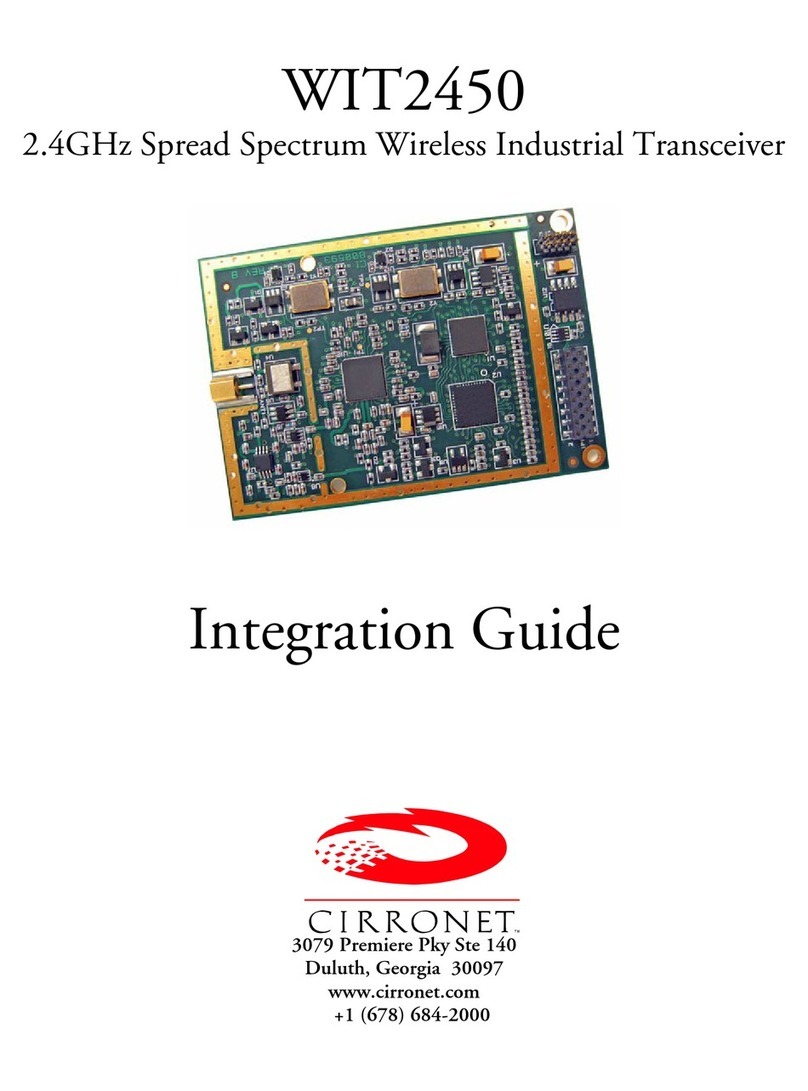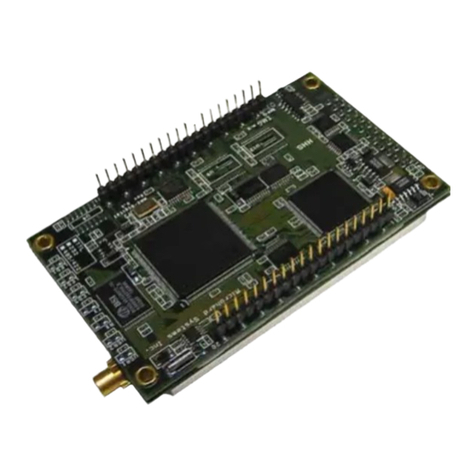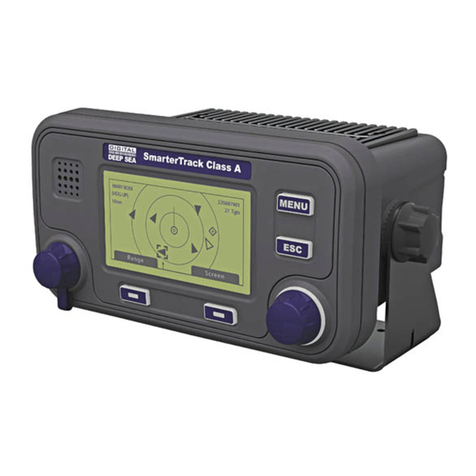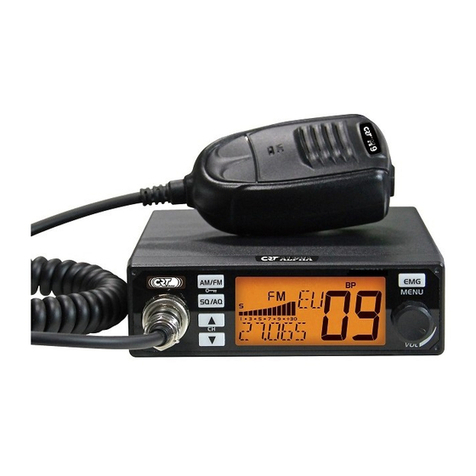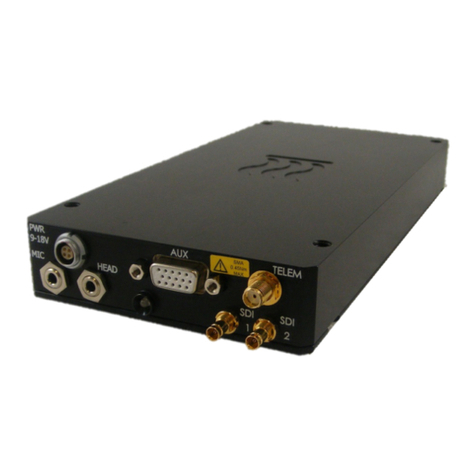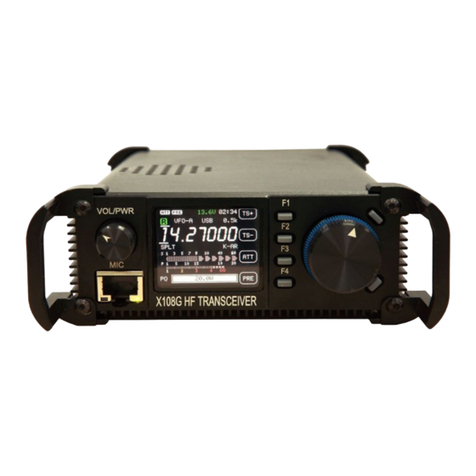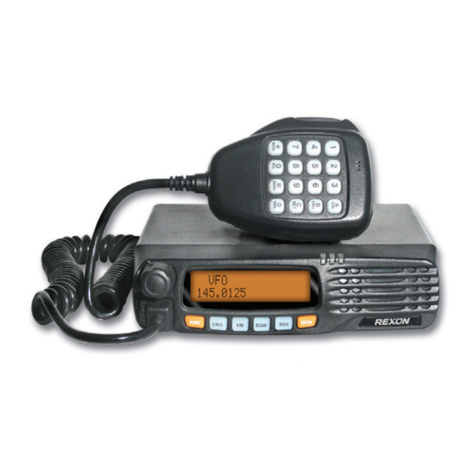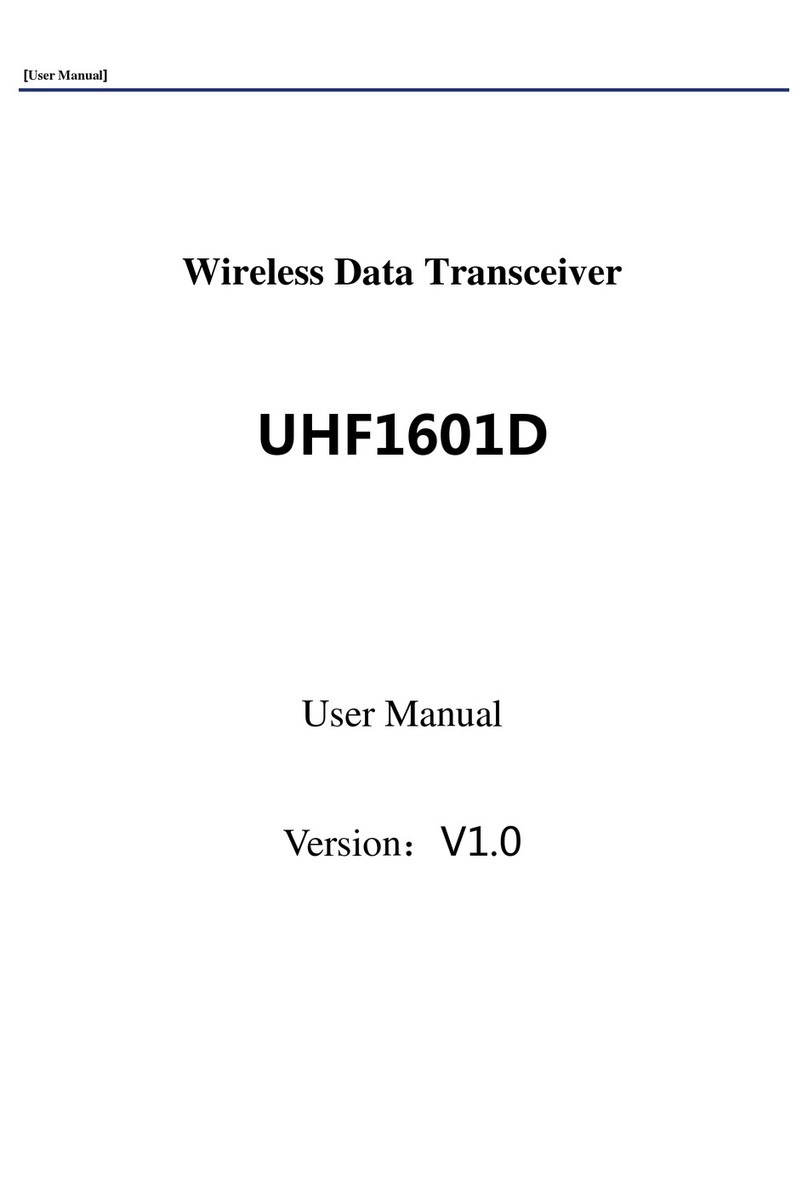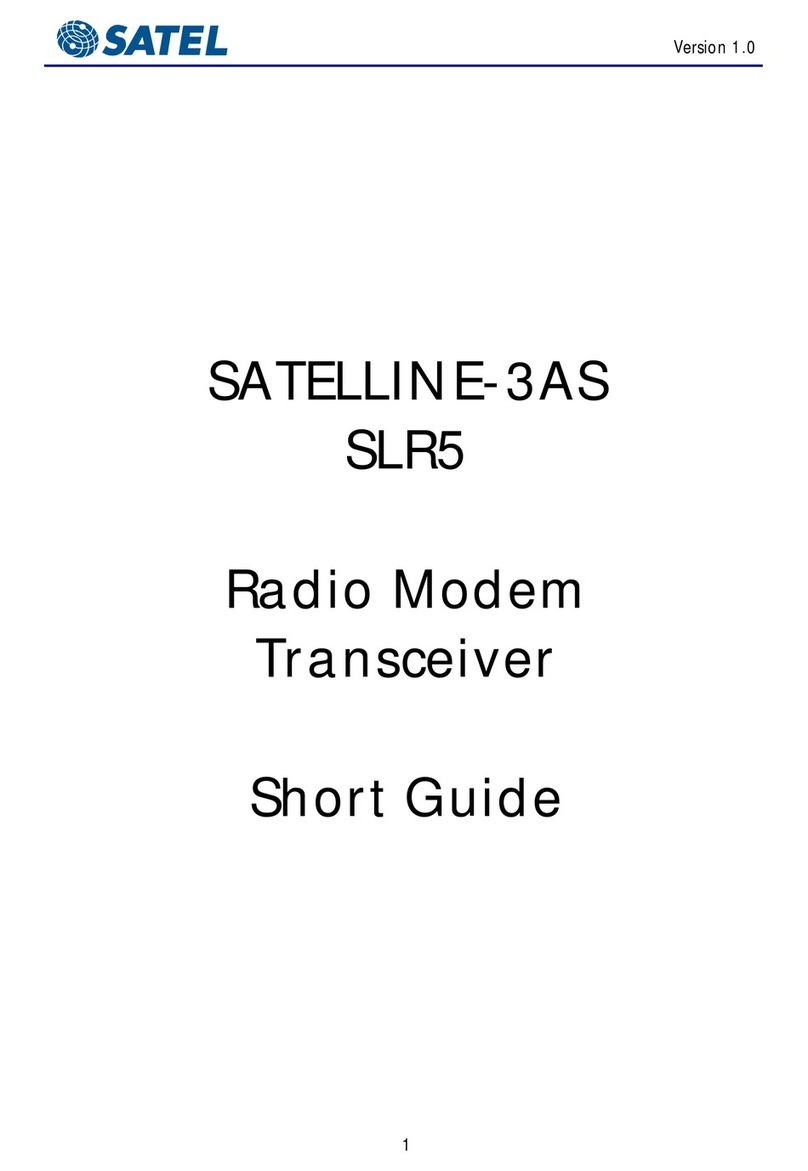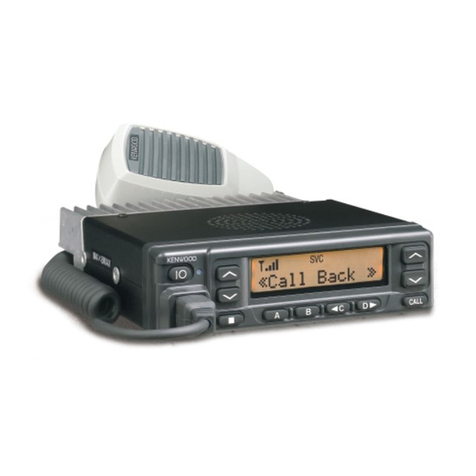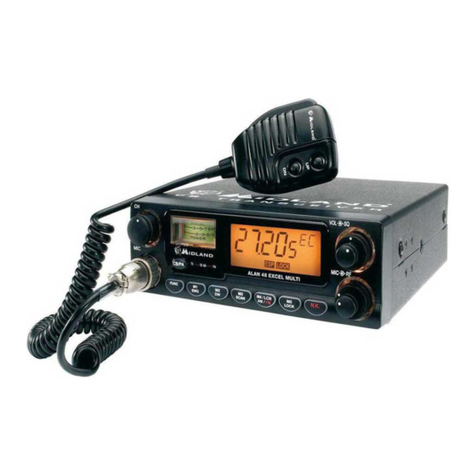Linear Technology DC1851A Quick setup guide

1
dc1851af
DEMO MANUAL DC1851A
DESCRIPTION
LTC2872
Dual Multiprotocol Transceiver
with Integrated Termination
Demonstration circuit 1851A showcases the LTC
®
2872
RS232/RS485 dual multiprotocol transceiver with inte-
grated termination. Separate supply inputs power the
interface and logic sections, permitting operation of the
logic control and I/O down to 1.7V. LEDs indicate when
supplies are present. Control pins are accessible via tur-
rets for external connections, or they may be set high or
low by means of a jumper. All logic I/O and interface I/O
is routed to turrets. The RS485 interface lines are also
L, LT, LTC, LTM, Linear Technology and the Linear logo are registered trademarks of Linear
Technology Corporation. All other trademarks are the property of their respective owners.
PERFORMANCE SUMMARY
available at a terminal block for convenient connection of
a transmission line. Because the LTC2872 contains half-/
full-duplex switching, it is unnecessary to jumper A and
B to Y and Z for half-duplex operation.
Design files for this circuit board are available at
http://www.linear.com/demo
PARAMETER CONDITIONS MIN TYP MAX UNITS
Input Supply VCC Operating
VLOperating
3.0
1.7
5.5
VCC
V
V
Maximum Data Rate RS232
RS485
500
20
kbps
Mbps
Specifications are at TA= 25°C

2
dc1851af
DEMO MANUAL DC1851A
QUICK START PROCEDURE
Overview
The LTC2872 dual multiprotocol transceiver contains two
identical channels, each comprising two RS232 drivers,
two RS232 receivers, and one RS485 driver and receiver.
The two channels are largely independent, sharing only
loopback and duplex control and a split supply generator.
Operating power is derived from the VCC input, while a
separate logic I/O supply pin (VL) permits the LTC2872
to adapt to any logic level ranging from 1.7V up to VCC.
Another key feature is that RS232 and RS485 inputs and
outputs may be interconnected without regard to loading
or voltage limitations. Allowing that only one interface
type is enabled at any given moment, input and output
characteristics of the selected standard are preserved
without violating the limits of the disabled sections. The
LTC2872 also includes selectable RS485 terminations, as
well as switching for half- and full-duplex modes, permit-
ting full digital control and eliminating the need for external
jumpers or relays to change between modes.
DC1851A includes:
• Bananas and turrets for supply connections along the
upper edge of the board.
• Green LEDs to indicate the presence of VCC and VL. Note
that the VLLED, D1, unavoidably dims and extinguishes
at VL < 2V.
• Turrets for logic I/O along the left edge of the board.
• Turrets for RS232 and RS485 interface connections
along the right edge of the board.
• Terminal blocks J5 and J6 for RS485 connections.
• Turrets and jumpers for selecting modes along bot-
tom edge of board. There are no pull-up or pull-down
resistors on the control lines; known states must be
asserted by jumpers or by applying a definitive logic
level to the turrets.
• 10k pull-up resistors on driver inputs DY1, DZ1, DY2
and DZ2. They assert a known logic-1 state when these
turrets are left open circuit.
In summary, DC1851A features a turret for each and every
LTC2872 logic, interface and supply pin. In addition the
supply pins have banana jacks, and the control pins are
connected to jumper blocks to establish their states.
Components
Components on DC1851A are divided into four basic
groups:
• R1-R11: 100 resistors included in series with the con-
trol signal turrets to limit fault current arising from any
accidental misadventures with the turrets or jumpers.
• D1, D2, R16, R17: VCC and VLsupply indicator LEDs
and current limiting resistors.
• R12-R15: 10k pull-ups to VLon DY1, DZ1, DY2 and
DZ2.
• C1-C5, L1: supply generation and bypassing compo-
nents for the LTC2872 (U1).
LTC2872 Operation
Each channel of the LTC2872 contains two RS232 drivers,
two RS232 receivers, one RS485 driver and one RS485
receiver.The485/232 controllinesenableeithertheRS485
or RS232 elements for each channel.
The RS485 transceiver includes a special half-/full-duplex
switching feature. In full-duplex mode, the receiver inputs
are connected to the A and B pins, while the driver is
connected to Y and Z. In half-duplex mode, the receiver
inputs are moved to Y and Z so that there is no need to
jumper A-B and Y-Z when switching between half- and
full-duplex modes.
RS485 terminations are included in the LTC2872. The
terminations are controlled by a termination enable control
line, TE485.

3
dc1851af
DEMO MANUAL DC1851A
QUICK START PROCEDURE
Jumpers
Jumper blocks are included to set the state of each control
pin to VL or GND. If the shorting jumper is set in the EXT
position, the control pin is connected to its associated tur-
ret and external signaling may be applied. Failure to select
one of the three positions results in a floating control pin
whose state is indeterminant. The turret is disconnected
and there are no internal or on-board pull-ups to establish
the logic state if the jumper block is open.
As shipped, jumpers on DC1851A are set to select
full-duplex RS485 mode with terminations enabled for
Channel 1, and RS232 mode for Channel 2.
See the data sheet Pin Functions and Function Tables for
a complete description of the control pin functions and
truth tables. A brief summary is given here:
Shared Control
JP5, LB: Loopback Enable. A logic high loops driver input
signals immediately back to associated receiver outputs.
Loopback is interruptedwhena receiver isdisabled. Default
position low, loopback disabled. Controls both channels
simultaneously.
JP6, H/F: RS485 Half-Duplex Select Input. A logic low
selects full-duplex operation where the RS485 receiver
respondsto signals on the A and B pins. A logic high selects
half-duplex operation where the RS485 receiver responds
to singals on the Y and Z pins. Default position low, full
duplex enabled. Controls both channels simultaneously.
H/Fhas no effect on a channel in RS232 mode. Note that
it is also possible to operate in half duplex by selecting
full-duplex mode and simply connecting A to Y and B to Z.
JP7, FEN: Fast Enable. A logic high enables fast enable
mode; the internal supply generator remains operational
regardless of the state of the driver, receiver and termina-
tion enables. Default position high, fast enable enabled.
In this state, the internal supply generator remains opera-
tional in the event all drivers, receivers and terminations
are disabled. If shut down, the supply generator requires
about 200s to power up again.
Independent Control
JP1, JP11, RXEN: Receiver Enable. A logic low enables
the receivers. Default position low, receivers enabled.
JP2, JP10, DXEN: Driver Enable. A logic high enables the
drivers. Default position high, drivers enabled.
JP3, JP9, TE485: RS485 Termination Enable. A logic high
enables 120 terminations across A-B and Y-Z. Default
JP3 position high, RS485 terminations enabled. Note
that in RS232 mode, TE485 is overridden and the RS485
termination for that channel is automatically disabled.
Default JP9 position low.
JP4, JP8, 485/232:RS485/RS232 Mode Select. A logic
high enables the RS485 mode. Default Channel 1 RS485,
Channel 2 RS232.
Probe Pads
Probe pads are included on the bottom of the board for
examination of the VCC, VDD, VEE, SW and CAP pins. A
GND probe pad is located nearby.
J5, J6
Terminal blocks J5 and J6 are included for easy connec-
tion of RS485 cables. For half-duplex operation, only Y
and Z need be connected. Terminal block connections are
hardwired to turrets A, B, Y and Z.
How to Operate DC1851A
Operation is straightforward: as shown in Figure 1, con-
nect a VCC supply of 3V to 5.5V, and a VLsupply of 1.7V
up to VCC. There are no special supply sequencing restric-
tions, although if VL > VCC the logic I/O signaling may not
operate properly. Note that D1, the VLsupply indicating
LED, will extinguish at VL< 2V. Apply logic and interface
signals to the desired inputs. Inputs may be driven with
the supplies removed, without damage to the LTC2872.

4
dc1851af
DEMO MANUAL DC1851A
The LTC2872 may be made to self-oscillate as a ring
oscillator by connecting the drivers and receivers in one
all-encompassing loop, and adding one inversion. The
inversion may be introduced with a logic inverter, or by
cross-connecting the RS485 driver and receiver in full-
duplex mode (connect Y to B and Z to A). The connection
arrangement shown in Figure 2 forms a ring oscillator
when used with the default jumper conditions. With VCC =
VL= 3.3V, the frequency of oscillation is typically 260kHz.
QUICK START PROCEDURE
LOGIC SUPPLY, VL
1.7V TO VCC
–
+
MAIN SUPPLY, VCC
3.0V TO 5.5V
–
+
dc1851 F01
LOGIC
SIGNALS
I/O
SIGNALS
CONTROL LINES
Figure 1. Basic Test Setup. As Shown, Channel 1 is Configured for Full-Duplex RS485, While Channel 2 Is Configured for 2 + 2 RS232.

5
dc1851af
DEMO MANUAL DC1851A
QUICK START PROCEDURE
Figure 2. Ring Oscillator Connection Permits Examination of All Waveforms
Without the Need for a Signal Generator. Oscillation Frequency ≈260kHz
3.3V SUPPLY
≈60mA
–+
dc1851 F02

6
dc1851af
DEMO MANUAL DC1851A
PARTS LIST
REFERENCE PART DESCRIPTION MANUFACTURER/PART NUMBER
C1 CAP, 0805, 470nF, 10%, 25V, X5R AVX 08053D474KAT2A
C2, C3, C4 CAP, 0805, 2.2µF, 10%, 25V, X7R AVX 08053C225KAT2A
C5 CAP, 0805 100nF, 10%, 25V, X7R AVX 08053C104KAT2A
D1, D2 LED, GREEN PANASONIC LN1351C-(TR)
L1 IND, 2016, 22µF, 200mA TAIYO YUDEN BRC2016T220M
R1-R11 RES, 1206, 100, 5%, 1/4W VISHAY CRCW1206100RJNEA
R12, R13, R14, R15 RES, 0603, 10k, 5%, 1/10W VISHAY CRCW060310K0JNEA
R16, R17 RES, 0603, 330, 5%, 1/10W NIC NRC0603J331TRF
U1 IC, RS232/RS485 DUAL MULTIPROTOCOL
TRANSCEIVER
LINEAR TECH. LTC2872IUHF

7
dc1851af
DEMO MANUAL DC1851A
Information furnished by Linear Technology Corporation is believed to be accurate and reliable.
However, no responsibility is assumed for its use. Linear Technology Corporation makes no representa-
tion that the interconnection of its circuits as described herein will not infringe on existing patent rights.
SCHEMATIC DIAGRAM

8
dc1851af
DEMO MANUAL DC1851A
LinearTechnology Corporation
1630 McCarthy Blvd., Milpitas, CA 95035-7417
(408) 432-1900 ●FAX: (408) 434-0507 ●www.linear.com
© LINEAR TECHNOLOGY CORPORATION 2012
LT 1112 • PRINTED IN USA
DEMONSTRATION BOARD IMPORTANT NOTICE
Linear Technology Corporation (LTC) provides the enclosed product(s) under the following AS IS conditions:
This demonstration board (DEMO BOARD) kit being sold or provided by Linear Technology is intended for use for ENGINEERING DEVELOPMENT
OR EVALUATION PURPOSES ONLY and is not provided by LTC for commercial use. As such, the DEMO BOARD herein may not be complete
in terms of required design-, marketing-, and/or manufacturing-related protective considerations, including but not limited to product safety
measures typically found in finished commercial goods. As a prototype, this product does not fall within the scope of the European Union
directive on electromagnetic compatibility and therefore may or may not meet the technical requirements of the directive, or other regulations.
If this evaluation kit does not meet the specifications recited in the DEMO BOARD manual the kit may be returned within 30 days from the date
of delivery for a full refund. THE FOREGOING WARRANTY IS THE EXCLUSIVE WARRANTY MADE BY THE SELLER TO BUYER AND IS IN LIEU
OF ALL OTHER WARRANTIES, EXPRESSED, IMPLIED, OR STATUTORY, INCLUDING ANY WARRANTY OF MERCHANTABILITY OR FITNESS
FOR ANY PARTICULAR PURPOSE. EXCEPT TO THE EXTENT OF THIS INDEMNITY, NEITHER PARTY SHALL BE LIABLE TO THE OTHER FOR
ANY INDIRECT, SPECIAL, INCIDENTAL, OR CONSEQUENTIAL DAMAGES.
The user assumes all responsibility and liability for proper and safe handling of the goods. Further, the user releases LTC from all claims
arising from the handling or use of the goods. Due to the open construction of the product, it is the user’s responsibility to take any and all
appropriate precautions with regard to electrostatic discharge. Also be aware that the products herein may not be regulatory compliant or
agency certified (FCC, UL, CE, etc.).
No License is granted under any patent right or other intellectual property whatsoever. LTC assumes no liability for applications assistance,
customer product design, software performance, or infringement of patents or any other intellectual property rights of any kind.
LTC currently services a variety of customers for products around the world, and therefore this transaction is not exclusive.
Please read the DEMO BOARD manual prior to handling the product. Persons handling this product must have electronics training and
observe good laboratory practice standards. Common sense is encouraged.
This notice contains important safety information about temperatures and voltages. For further safety concerns, please contact a LTC applica-
tion engineer.
Mailing Address:
Linear Technology
1630 McCarthy Blvd.
Milpitas, CA 95035
Copyright © 2004, Linear Technology Corporation
Table of contents
Other Linear Technology Transceiver manuals
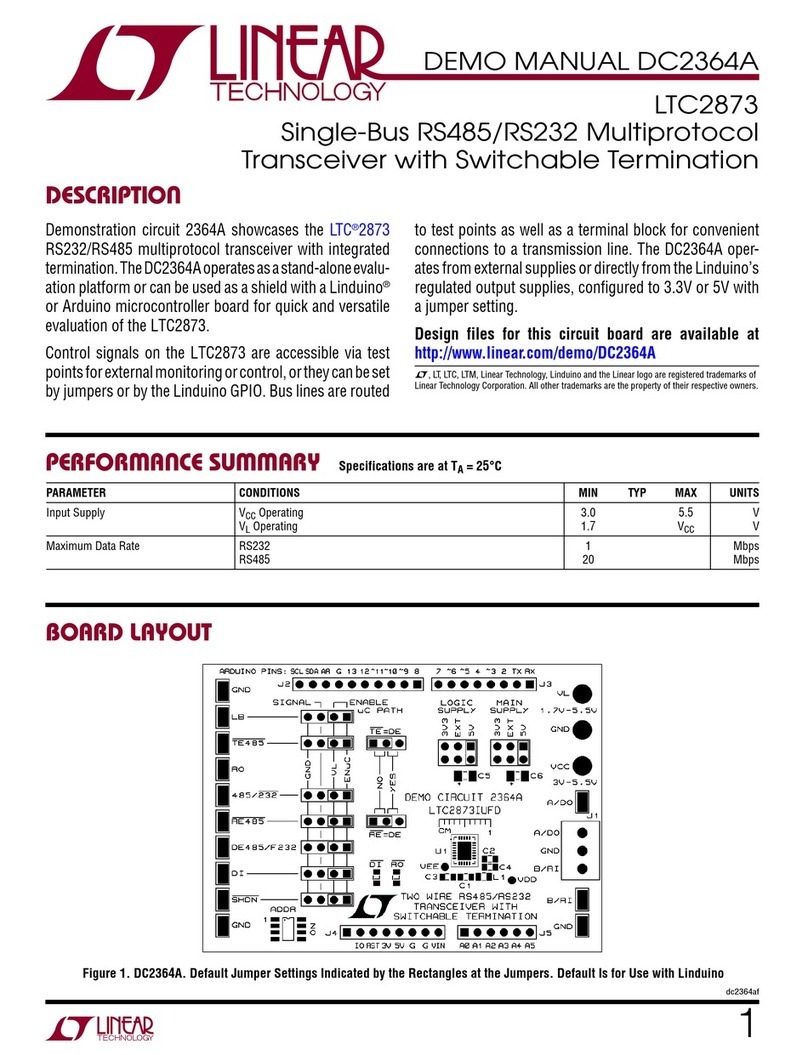
Linear Technology
Linear Technology DC2364A Quick setup guide
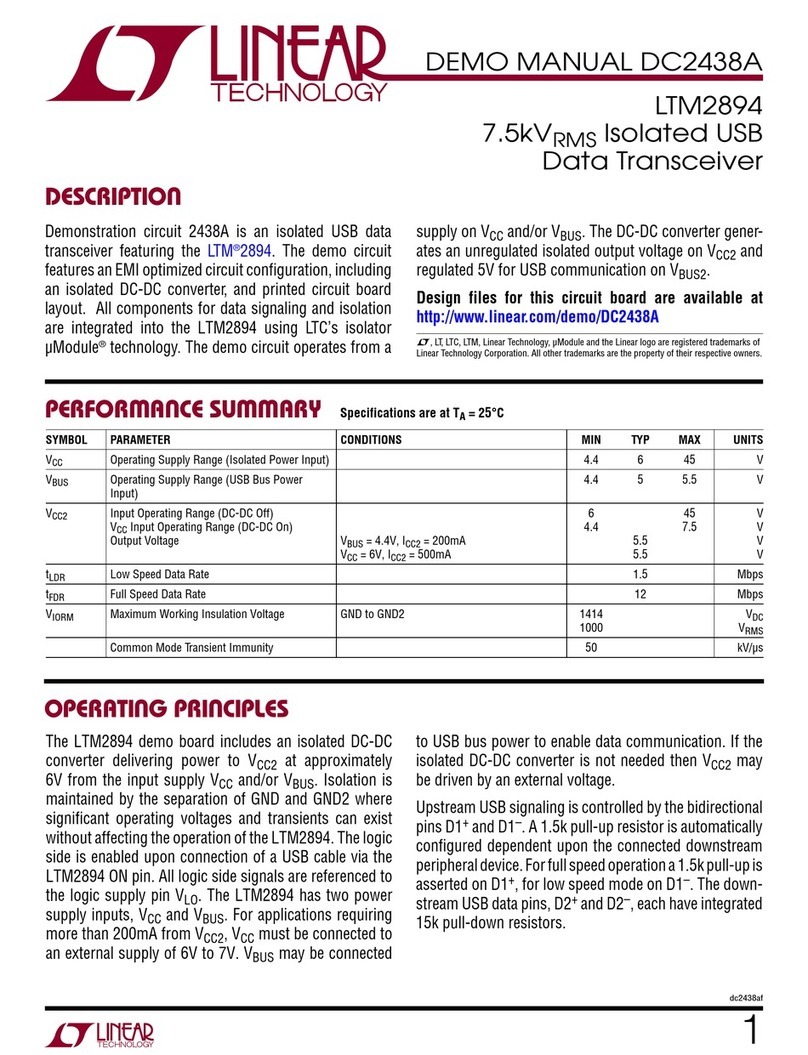
Linear Technology
Linear Technology DC2438A Quick setup guide
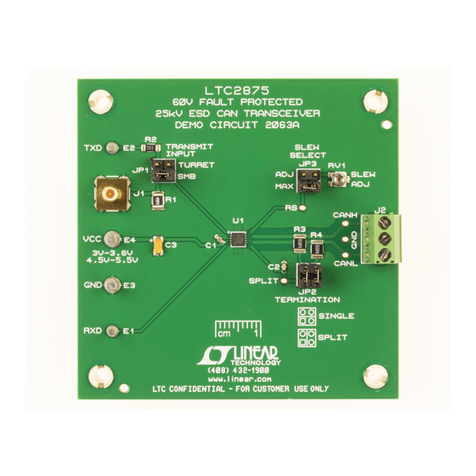
Linear Technology
Linear Technology DC2063A Quick setup guide

Linear Technology
Linear Technology DC1746A Quick setup guide
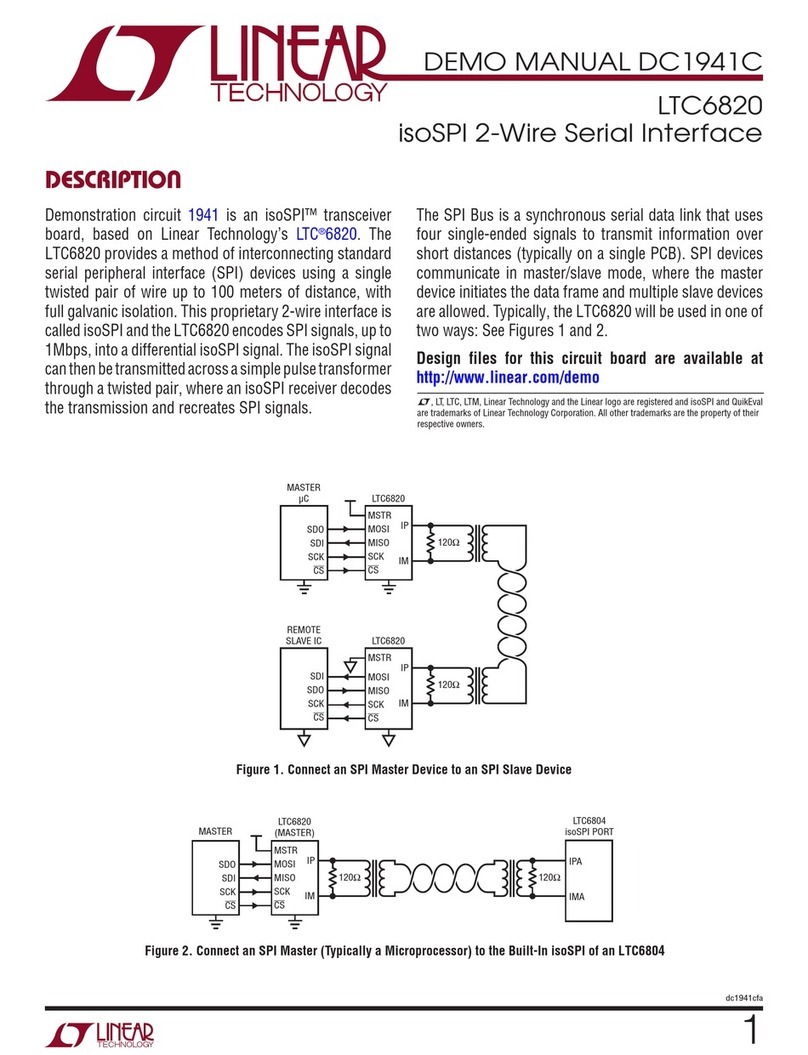
Linear Technology
Linear Technology DC1941C Quick setup guide

